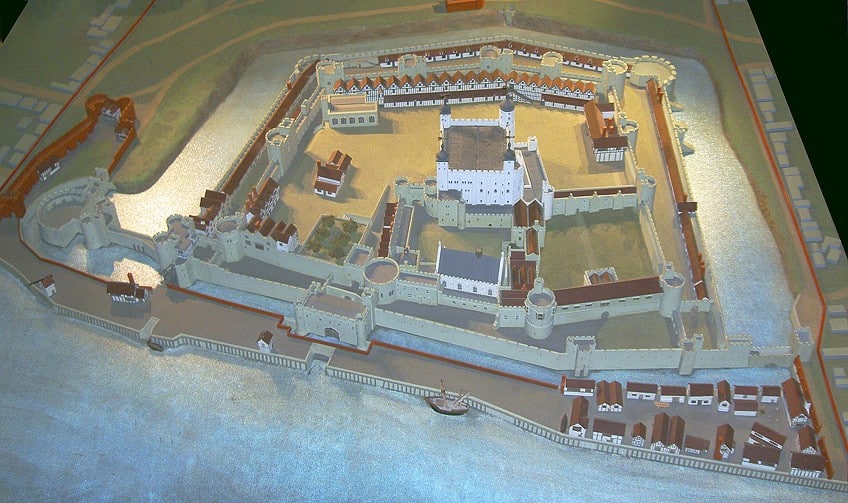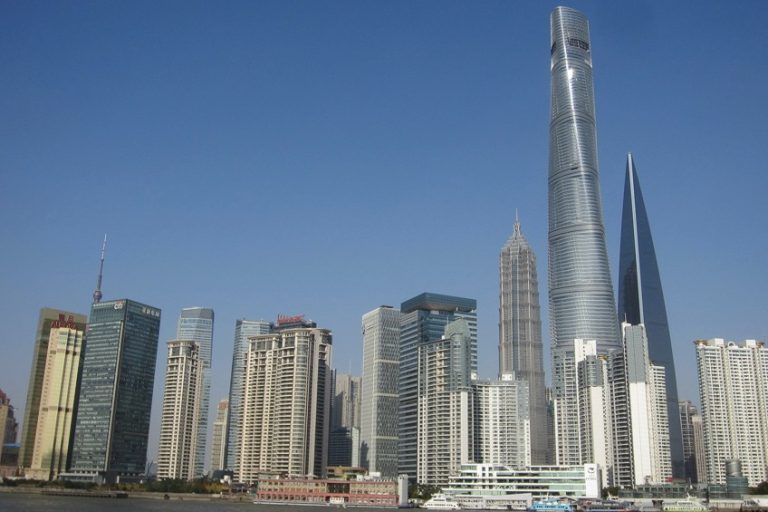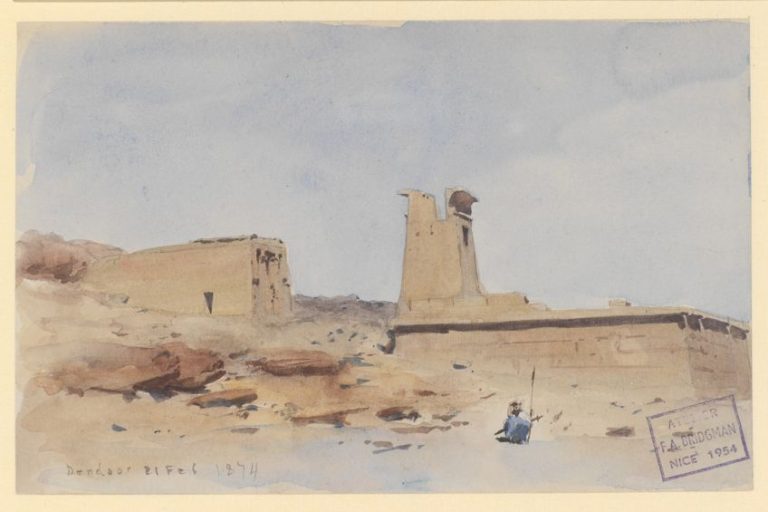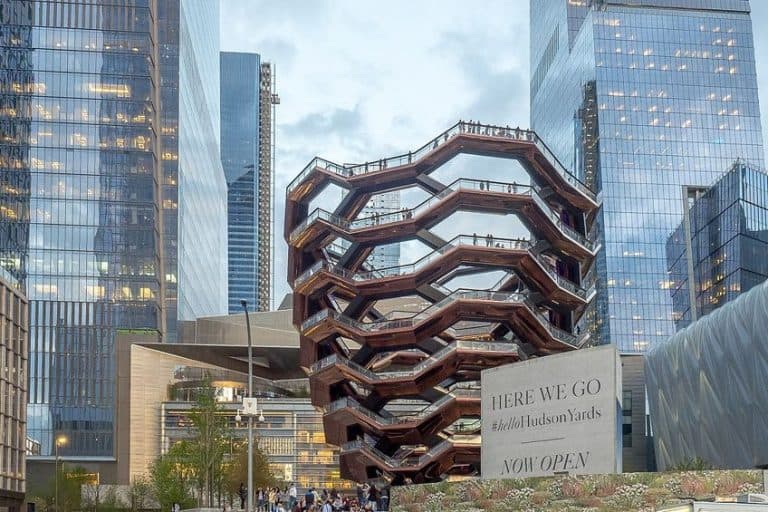Tower of London – What Is the Tower of London?
What is the Tower of London and who owns the Tower of London? Who built the Tower of London and when was the Tower of London built? These are just some of the questions that pop up when first exploring the Tower of London’s history. To discover all the Tower of London facts, take a virtual ride with us to the land of Shakespeare and fish and chips!
The Tower of London’s History
| Architect | William the Conqueror (1028 – 1087) |
| Date Completed | 1078 |
| Function | Royal palace |
| Location | London Borough of Tower Hamlets, London, United Kingdom |
First off, let’s start by answering the question, “Where is the Tower of London located?” The tower is a historical fortress situated in central London on the northern bank of the Thames River. Throughout the Tower of London’s history, it was besieged on multiple occasions as control of the tower equated to control of the entire region. Over the years it has been used as a public record office, treasury, armory, home of the Royal Mint, as well as a repository for the Crown Jewels of England.

What was the Tower of London originally used for, though? The Tower of London was initially constructed as a royal residence and military fortress and was ordered to be built by William the Conqueror. And in case you want to know who lives in the Tower of London currently, you might be interested to know that the tower is still used today as the residence for the Resident Governor, the Yeoman Warders, as well as a few soldiers. To find out more though, let us dive deeper into the Tower of London’s history.
Early History of the Tower of London
After winning the Battle of Hastings on the 14th of October 1066, William the Conqueror spent the remainder of the year strengthening critical positions to secure his territories. He built various castles along the way, but took a meandering path to London, eventually turning towards England’s capital only after he reached Canterbury. He chose to pillage Southwark instead of continuing his voyage across southern England since the reinforced bridge into London was guarded by Saxon forces. A succession of Norman victories along the way severed the city’s supply lines, and its commanding officers surrendered London without a struggle in December 1066, stranded and terrified.
The Normans launched the most widespread and focused program of castle-building in the entire history of medieval Europe, with William the conqueror constructing 36 castles between 1066 and 1087.
These were multi-purpose structures that served as fortifications, headquarters of operations in hostile territory, administrative centers, as well as residences. He dispatched an advance team to ready the city for his arrival, celebrate his conquest, and build a castle. Several city fortifications were constructed in response to the discontent of the local people. For William, overpowering and subduing the Londoners with awe was of the utmost importance. The Tower of London was erected upon the southeastern side of the Roman town walls, which were used as premade defenses, with the Thames River offering extra defense from the south. This first section of the fortress would have been surrounded by a ditch and protected by a timber barrier, and would have also accommodated William. The majority of early Norman castles were made of wood, however, by the end of the 11th century, a handful, like the Tower of London, had been restored or reconstructed with stone.

The construction of the Tower of London is said to have begun around 1078, but the precise date is unknown. It was most likely completed by 1100 when a Bishop named Ranulf Flambard was detained there. He is the first person known to have been imprisoned in the Tower, and he was also the first to escape from there using a rope that was hidden in a container of wine. The story goes that on the 2nd of February, 1101 he threw a dinner for his captors. After enticing them with wine, he descended from a secluded room and out of the castle while no one was watching. At the time no one knew how he had managed to escape, with one writer even reporting that he must have used witchcraft to escape.
King William II ordered the construction of a wall around the Tower of London in 1097; it was most likely made of stone and replaced the timber barrier that arced around the west and north sides of the fortress, between the Roman wall and the Thames.
Expansion of the Tower of London
Until the time of Richard I, the castle preserved the same original design it had been since 1100. The tower was expanded by King Richard’s Lord Chancellor, William Longchamp, who was in command of England while King Richard went on crusades. He built a moat around the fortress and unsuccessfully tried to fill it with water from the river Thames. The new defenses were put to the test in October 1191, when the castle was besieged for the very first time in its existence by King Richard’s younger brother, Prince John, who had arrived in England to seize control while Richard was away.

Many of King John’s barons were displeased with his leadership and decided to revolt against him. While King John was visiting Windsor Castle in 1214, Robert Fitzwalter commanded a troop of soldiers into London and besieged the tower. The tower withstood the attack despite being under-garrisoned, and the siege was withdrawn once the king signed the Magna Carta agreement. King John broke his pledge to reform, resulting in the conflict known as the First Barons’ War. Fitzwalter retained his rule over London even after the Magna Carta was issued.
In 1216, John was ousted, and the crown was offered to Prince Louis, the French king’s eldest son. Nonetheless, after John’s passing in October 1216, many people started supporting his eldest son, Henry III’s, claim to the throne. The war between the forces backing Henry and Louis raged on, with Fitzwalter siding with Louis. Fitzwalter retained control of London and the castle until it became evident that Henry III’s allies would succeed.
Kings Henry III enlarged the castle in the 13th century, effectively building it as it appears to this day. Henry was isolated from his peers, and their mutual misunderstanding led to instability and disdain for his reign.
As a result, he was determined to guarantee that the castle was a powerful fortress; while at the same time, he was also an aesthete who wanted to make the fortress a pleasant place to live. The castle was extended to the north, east, and northwest beginning in approximately 1238. The project lasted through Henry III’s reign and into Edward I’s, with only brief interruptions due to civil unrest. Although he was seldom in London, Edward I launched an extensive restoration of the Tower of London, costing more than double what Henry III had spent on the castle during his reign. Edward I was an experienced builder of castles by that point who used his knowledge in siege warfare attained during the crusades to advance fortress construction. Edward filled in Henry III’s moat and erected a new wall along its perimeter, resulting in a new enclosure. He also erected two watermills on the castle grounds in an attempt to make it more self-sufficient.
The Tower of London in the Later Medieval Period
The Tower of London saw little development during Edward II’s reign, however, it was at this time that the Privy Wardrobe was established. The organization was located in the castle itself and was in charge of organizing the state’s weaponry. The Tower of London was regarded as the most notable royal jail in the country, generally designated for high-ranking offenders. Yet, it was not always secure, as many prisoners bribed the soldiers to let them escape over the years. Edward II had let the castle deteriorate, and by the time Edward III took his position, the fortress had become an unpleasant place to live. The nobles imprisoned within its walls were forbidden from engaging in pastimes such as hunting, which were permitted at other royal castles used to house prisoners, such as Windsor Castle.
The Tower of London experienced very little expansion in the 15th century, although it remained an essential sanctuary of refuge. For example, when allies of the late Richard II tried to stage a coup, Henry IV sought refuge in the castle.
During this time, the castle also housed numerous notable captives, including the heir to the Scottish throne, King James I of Scotland, who was abducted while traveling to France in 1406 and imprisoned in the Tower of London. The tragic murder of the Princes is thought to have occurred shortly after Edward IV’s death in 1483. The episode is among the most notorious in the tower’s history. While Edward V was too young to reign, his uncle, Richard, who was the Duke of Gloucester, was appointed Lord Protector. According to accounts, the 12-year-old Edward and his little brother were held captive within the castle. In 1483, the Duke of Gloucester became King Richard III, while the princes had last been spotted in public in June of the same year.

It has long been believed that they were killed at the end of the summer of 1483, which is the most possible explanation for their sudden disappearance. When the 12th-century building at the entry to the tower was dismantled in 1674, bones believed to belong to the young princes were discovered; nevertheless, the reported level at which the bones were located would place the bones at a depth close to that of the Roman-era graves uncovered.
Changing Functions over Time
The Tower of London’s function as a royal palace began to decrease around the start of the Tudor period. The Tower was utilized as an armory and house of munitions, as well as a facility for the detention of criminals, rather than a royal home for a king or queen to stay in. During Henry VIII’s reign, the Tower’s defenses were evaluated as needing significant upgrading. Although the defenses were rebuilt, the palace structures were neglected following Henry’s death.
The chambers were found in such bad shape that they were deemed practically uninhabitable.
The Tower of London had a long reputation as a harsh, forbidding jail in the 16th century. Yet, it had not always been this way. When it was used as a royal castle, the king used it to imprison people for different reasons, although these were mainly high-status nobles for brief periods of time rather than average citizens, as there were numerous prisons nearby for such people. Although much of the Tower’s notoriety is overblown, the 16th and 17th centuries saw the fortress at its pinnacle being used as a jail, with numerous political and religious dissidents imprisoned. While the Yeoman were previously the bodyguards for the monarchs, by the 16th and 17th centuries, their primary responsibility had shifted to the care of captives.
The castle was considered to be a far safer site than other such facilities in London, for example the Fleet, a place where sickness was rampant. High-status inmates might live in circumstances equivalent to those found outside; for instance, while Walter Raleigh was imprisoned there, his quarters were modified to fit his family, including his son, who was born there in 1605. There were intentions in the 17th century to improve the tower’s defenses in the manner of the trace italienne, but they were never implemented. Although the garrison’s amenities were improved with the establishment of the first purpose-built soldier barracks in 1670, the overall accommodations remained in poor shape.
When the Hanoverian dynasty acquired the throne, their position was shaky, and the Tower of London was restored in anticipation of a future Scottish insurrection.
The 18th-century construction on the defenses was infrequent and sporadic, with the exception of a new entrance in the southern curtain wall that allowed access from the dock to the outer ward in 1774. During World War I, 11 individuals were tried at the tower privately and executed by firing squad for espionage. During WWII, it was once again utilized to house prisoners of war. Adolf Hitler’s deputy, Rudolf Hess, was one such individual, though it was only for around four days in 1941. The tower was also used as a defense for the very last time during WWII.
Modern Tourism and Restorations
The Tower of London has positioned itself as one of the nation’s most popular tourist attractions. Since at least the Elizabethan era, when the famous tower was one of the London landmarks that travelers from other countries most wrote about, it has been a favored tourist destination. Despite the Duke of Wellington’s aversion to visitors, the Tower became increasingly popular with tourists during the 19th century. The opulent structures were gradually modified for new uses and dismantled over the 18th and 19th centuries. The 18th century was witness to a surge of interest in England’s medieval history.

Among the effects of this resurgence was the development of the Gothic Revival architectural style, which was visible in the Tower of London’s design when the New Horse Armoury was completed in 1825. Contemporary writers, notably the work of William Harrison Ainsworth, fueled public interest in the tower in certain respects. He produced a vivid picture of underground torture cells and painful devices used for obtaining confessions in his writings that stayed in the mind of the public.
Ainsworth also contributed to the Tower of London’s history by advocating for the opening of the Beauchamp Tower so that people could examine the inscribed names of convicts from the 16th and 17th centuries. Anthony Salvin carried out the request and supervised a program for the thorough repair of the tower.
John Taylor eventually succeeded Salvin in that position. However, Taylor was merciless in his removal of features that did not conform to his notions of medieval design, which resulted in the dismantling of numerous significant structures inside the castle and, in some instances, the removal of post-medieval interior decor. The Tower of London’s major function in the 21st century is tourism, with the last routine military duties having ended in the latter half of the last century and transferred out of the castle. Since 2006, the ruins of the medieval castle have been open to the general public, allowing tourists to explore the rebuilt rooms. Although the title of Constable of the Tower is the highest office held at the Tower of London, the Resident Governor is in charge of day-to-day management.
That about concludes our look at the Tower of London’s facts and historical events. Originally built all the way back in the 11th century by William the Conqueror, it has seen many changes over the centuries from when it was originally used as a fortress to house the royal family. Since then, it has served as a prison for nobility, as well as a safe place to store the crown jewels and armory. Today, however, it is mostly utilized for its tourism potential, with thousands of people flocking there regularly to marvel at the tower of London’s architecture and history. The old royal guards even give the tours.
Frequently Asked Questions
When Was the Tower of London Built?
The Tower of London was constructed in the 11th century. The White Tower, the castle’s centerpiece and most renowned structure, was constructed in 1078. The Tower of London took 20 years to construct. The castle has been enlarged and modified over the ages, with consecutive rulers adding and renovating.
What Is the Tower of London Used for Today?
It is now a UNESCO World Heritage Site, housing the Crown Jewels and serving as a tourist attraction. It also acts as a ceremonial location for royal and state functions. It is also utilized as a museum and educational facility, with displays and tours highlighting the castle’s heritage and relevance.
Who Built the Tower of London Originally?
William the Conqueror, who was the Duke of Normandy, succeeded in attacking and capturing England during the Norman Conquest in 1066. He spent much of his youth cementing his control in Normandy and assembling a formidable military force. William launched an attack on England in 1066, seizing the English throne for himself. He established several feudal institutions, including the usage of castles as forts, and was responsible for the construction of the Tower of London.
What Was the Tower of London Originally Used for When It Was First Constructed?
When the tower was initially built, it served as a royal home and a fortification. The White Tower was also a jail, treasury, and royal menagerie. It is now a popular tourist destination.
Where Exactly Is the Tower of London Located?
On the northern bank of the Thames River in the heart of London, England, is where you’ll find the Tower of London. It is close to Tower Bridge, which crosses the Thames and links the Tower of London with the river’s southern bank. If you are planning on visiting, there are several bus routes that will take you there and the nearest station is called Tower Hill.
Who Owns the Tower of London?
The British state, primarily the Crown, owns the Tower of London. The Tower of London is overseen and maintained by the Crown Estate, a collection of properties and interests belonging to the British monarch. The Crown Estate is distinct from the king’s own property and is not transferred on to the next king. Rather, the Crown Estate’s income is used to assist the United Kingdom’s government budget. The Tower of London is managed on a daily basis by Historic Royal Palaces, an independent organization that takes care of the Tower of London and several other royal palaces.
Who Lives in the Tower of London Currently?
The Yeoman Warders, often called Beefeaters, are permanent staff members who reside in the castle and are in charge of maintaining the castle and giving guests guided tours. They are appointed by the King and are retired personnel of the British Armed Forces. The restored chambers of the royal families are now open to public view.
Justin van Huyssteen is a freelance writer, novelist, and academic originally from Cape Town, South Africa. At present, he has a bachelor’s degree in English and literary theory and an honor’s degree in literary theory. He is currently working towards his master’s degree in literary theory with a focus on animal studies, critical theory, and semiotics within literature. As a novelist and freelancer, he often writes under the pen name L.C. Lupus.
Justin’s preferred literary movements include modern and postmodern literature with literary fiction and genre fiction like sci-fi, post-apocalyptic, and horror being of particular interest. His academia extends to his interest in prose and narratology. He enjoys analyzing a variety of mediums through a literary lens, such as graphic novels, film, and video games.
Justin is working for artincontext.org as an author and content writer since 2022. He is responsible for all blog posts about architecture, literature and poetry.
Learn more about Justin van Huyssteen and the Art in Context Team.
Cite this Article
Justin, van Huyssteen, “Tower of London – What Is the Tower of London?.” Art in Context. July 3, 2023. URL: https://artincontext.org/tower-of-london/
van Huyssteen, J. (2023, 3 July). Tower of London – What Is the Tower of London?. Art in Context. https://artincontext.org/tower-of-london/
van Huyssteen, Justin. “Tower of London – What Is the Tower of London?.” Art in Context, July 3, 2023. https://artincontext.org/tower-of-london/.









